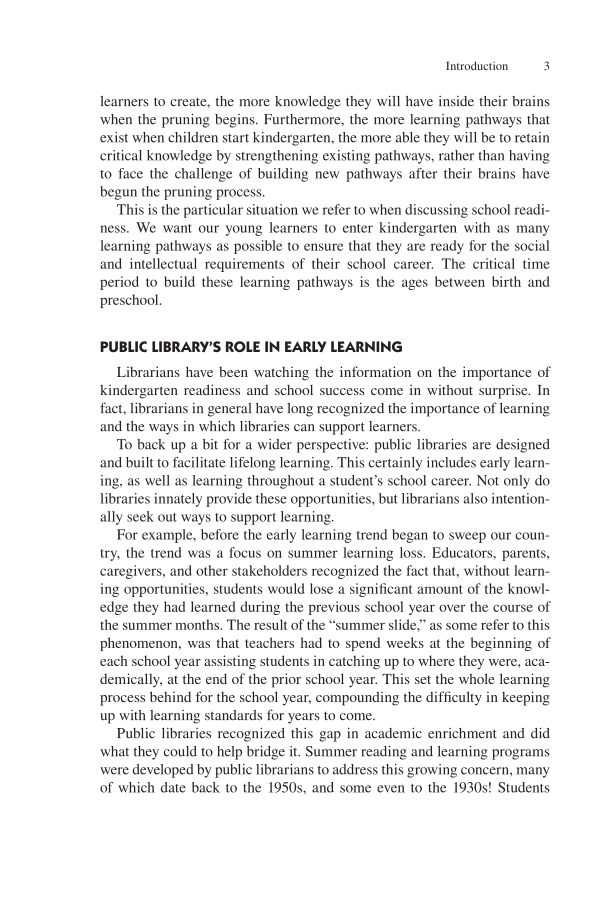Introduction 3 learners to create, the more knowledge they will have inside their brains when the pruning begins. Furthermore, the more learning pathways that exist when children start kindergarten, the more able they will be to retain critical knowledge by strengthening existing pathways, rather than having to face the challenge of building new pathways after their brains have begun the pruning process. This is the particular situation we refer to when discussing school readi- ness. We want our young learners to enter kindergarten with as many learning pathways as possible to ensure that they are ready for the social and intellectual requirements of their school career. The critical time period to build these learning pathways is the ages between birth and preschool. PUBLIC LIBRARY’S ROLE IN EARLY LEARNING Librarians have been watching the information on the importance of kindergarten readiness and school success come in without surprise. In fact, librarians in general have long recognized the importance of learning and the ways in which libraries can support learners. To back up a bit for a wider perspective: public libraries are designed and built to facilitate lifelong learning. This certainly includes early learn- ing, as well as learning throughout a student’s school career. Not only do libraries innately provide these opportunities, but librarians also intention- ally seek out ways to support learning. For example, before the early learning trend began to sweep our coun- try, the trend was a focus on summer learning loss. Educators, parents, caregivers, and other stakeholders recognized the fact that, without learn- ing opportunities, students would lose a significant amount of the knowl- edge they had learned during the previous school year over the course of the summer months. The result of the “summer slide,” as some refer to this phenomenon, was that teachers had to spend weeks at the beginning of each school year assisting students in catching up to where they were, aca- demically, at the end of the prior school year. This set the whole learning process behind for the school year, compounding the difficulty in keeping up with learning standards for years to come. Public libraries recognized this gap in academic enrichment and did what they could to help bridge it. Summer reading and learning programs were developed by public librarians to address this growing concern, many of which date back to the 1950s, and some even to the 1930s! Students
Document Details My Account Print multiple pages
Print
You have printed 0 times in the last 24 hours.
Your print count will reset on at .
You may print 0 more time(s) before then.
You may print a maximum of 0 pages at a time.




















































































































































































